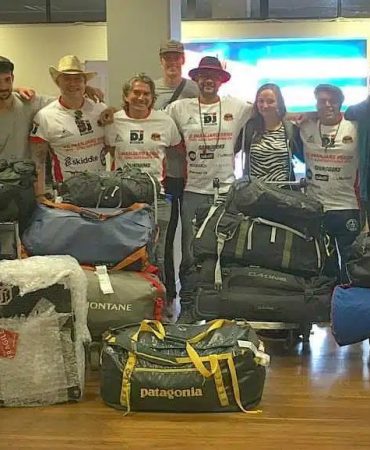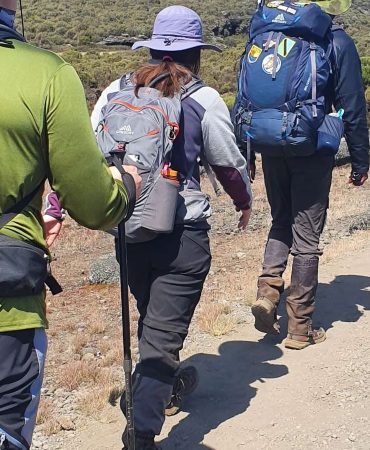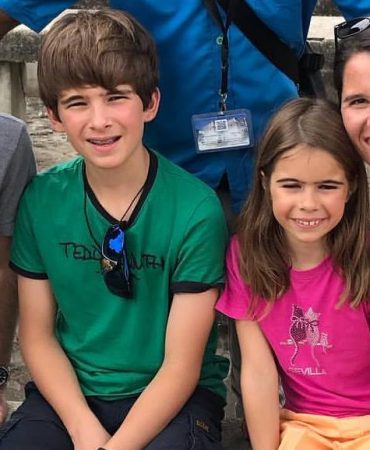Mount Kilimanjaro Tanzania offers a thrilling 7-day adventure. Conquer Africa’s highest peak with East Africa Travel Company’s expert guides.



Mount Kilimanjaro Tanzania
Introduction
Mount Kilimanjaro, Africa’s highest peak, stands majestically in Tanzania, attracting trekkers from around the world. This epic 10-day trek is not just a physical challenge but a journey through diverse ecosystems, breathtaking landscapes, and rich cultural heritage. Ideal for adventure enthusiasts and nature lovers, this trek offers an unforgettable experience that combines the thrill of reaching the summit with the serenity of untouched nature.
Geographical Information
Mount Kilimanjaro is located in northeastern Tanzania, near the border with Kenya. The mountain boasts three volcanic cones: Kibo, Mawenzi, and Shira. Kilimanjaro’s climate varies significantly, from tropical at the base to arctic at the summit. The best times to visit are during the dry seasons from January to mid-March and June to October, when the weather is most favorable for trekking. Accessibility is straightforward, with Kilimanjaro International Airport serving as the main gateway. From there, various transportation options, including shuttle services and private transfers, can take you to the starting points of the trek.
Historical Context
Discovered in 1848 by European missionaries, Mount Kilimanjaro quickly became a symbol of exploration and adventure. The mountain holds significant cultural value for the Chagga people, who live on its slopes and consider it sacred. Over the years, Kilimanjaro has witnessed numerous famous expeditions, including those by Hans Meyer and Ludwig Purtscheller, the first recorded climbers to reach the summit in 1889. This rich history adds a layer of depth and intrigue to the trekking experience.
Trekking Routes
Mount Kilimanjaro offers several routes, each with its unique features and challenges:
- Marangu Route: Known as the “Coca-Cola” route, it is the oldest and most established route with hut accommodations.
- Machame Route: Popular for its diverse scenery, this “Whiskey” route is considered more challenging due to its steeper paths.
- Lemosho Route: Offers beautiful landscapes and a higher success rate due to its longer acclimatization period.
- Rongai Route: Approaching from the north, this route is less crowded and provides a different perspective of the mountain.
- Northern Circuit Route: The longest route, providing excellent acclimatization and stunning views of the mountain’s northern slopes.
Each route offers a distinct experience, catering to different levels of trekking expertise and preferences.
Preparation for the Trek
Embarking on a 10-day trek to the summit of Mount Kilimanjaro requires thorough preparation:
- Physical Fitness Requirements: It’s essential to be in good physical condition. Regular cardiovascular exercises, strength training, and hiking practice are recommended.
- Training Regimen: Start training at least three months in advance, focusing on endurance, leg strength, and altitude conditioning.
- Essential Gear and Equipment: Key items include sturdy hiking boots, layered clothing for varying temperatures, a good quality sleeping bag, and a backpack. Don’t forget trekking poles, a headlamp, and hydration systems.
- Packing Tips: Pack light but ensure you have all necessary gear. Use waterproof bags and organize items for easy access.
Day-by-Day Itinerary
Day 1: Arrival and Orientation
Arrive in Tanzania and transfer to your hotel in Moshi or Arusha. Attend an orientation session where you will meet your guides and fellow trekkers, and receive a briefing on the trek.
Day 2: Beginning the Trek
Start your journey from the selected route’s trailhead. Enjoy the initial lush forests, spotting wildlife and diverse plant species.
Day 3-9: Trekking Through Different Zones
- Day 3-4: Continue through montane forests to moorlands. Acclimatize to the increasing altitude.
- Day 5-6: Enter the alpine desert, with sparse vegetation and stunning landscapes.
- Day 7-8: Reach higher altitudes, moving through rugged terrain. Acclimatization is critical at this stage.
- Day 9: Arrive at the base camp for final summit preparations.
Day 10: Summit Day and Descent
Begin the final ascent at midnight to reach the summit by sunrise. Experience the exhilaration of standing at Uhuru Peak, the highest point in Africa. After celebrating, begin the descent to lower altitudes, completing the trek.
Flora and Fauna
Mount Kilimanjaro is home to diverse flora and fauna, with five distinct ecological zones.
- Unique Plant Species: From dense rainforests to alpine deserts, you’ll encounter a variety of plant life, including the giant groundsels and lobelias.
- Wildlife Encounters: The mountain supports various animals, such as blue monkeys, colobus monkeys, and the elusive Kilimanjaro tree hyrax.
- Conservation Efforts: Numerous initiatives aim to preserve the mountain’s unique ecosystems, protecting both plant and animal species.
Cultural Insights
The trek also offers a rich cultural experience:
- Local Customs and Traditions: Learn about the Chagga people, their farming practices, and traditional dances.
- Interaction with Local Tribes: Engage with local communities, understanding their way of life and the cultural significance of Kilimanjaro.
- Cultural Significance of the Mountain: Discover the myths and legends surrounding Kilimanjaro, which holds a special place in local folklore.
Health and Safety
Safety is paramount when trekking Kilimanjaro:
- Altitude Sickness Prevention: Acclimatize gradually, stay hydrated, and recognize symptoms like headaches and nausea.
- Safety Tips for Trekkers: Follow your guide’s instructions, pace yourself, and ensure proper gear and clothing.
- Emergency Procedures: Understand the evacuation protocols and always communicate any health concerns to your guide.
Accommodation and Meals
During the trek, you’ll stay in either huts or tents, depending on the route:
- Types of Accommodation: From basic huts on the Marangu route to camping tents on other routes, accommodations are designed for comfort and safety.
- Meal Planning and Dietary Needs: Meals are provided, focusing on high-energy foods to fuel your trek. Inform your guides of any dietary restrictions.
- Hygiene and Sanitation: Facilities are basic but adequate. Ensure you carry personal hygiene items and maintain cleanliness.
Cost and Budgeting
A Kilimanjaro trek requires careful financial planning:
- Breakdown of Costs: Expenses include park fees, guide and porter services, accommodation, and meals.
- Tips for Budgeting Your Trip: Look for inclusive packages that cover most expenses, and compare different operators for the best value.
- Available Packages and Deals: Various tour operators offer packages ranging from budget to luxury, catering to different preferences and budgets.
Environmental Impact
Sustainable trekking practices are crucial to preserving Kilimanjaro:
- Sustainable Trekking Practices: Follow Leave No Trace principles, avoid single-use plastics, and respect wildlife.
- Efforts to Preserve Mount Kilimanjaro: Support conservation programs and choose eco-friendly tour operators.
- How Trekkers Can Contribute: Participate in clean-up initiatives and advocate for sustainable tourism practices.
Personal Stories
Hear from trekkers who have conquered Mount Kilimanjaro:
- Testimonials from Previous Trekkers: Hear about their experiences, challenges, and moments of triumph.
- Inspirational Stories and Experiences: Learn how the trek impacted their lives and left a lasting impression.
- Challenges Faced and Overcome: Discover how they overcame obstacles, both physical and mental, on their journey to the summit.
Expert Insights
Gain valuable insights from experienced guides and trekkers:
- Tips from Professional Guides: Expert advice on preparation, acclimatization, and summiting strategies.
- Insights from Experienced Trekkers: Learn from seasoned trekkers about what to expect and how to make the most of your experience.
- Recommendations for a Successful Trek: Practical tips and recommendations to ensure a safe and enjoyable journey.
FAQs
Get answers to common questions about trekking Mount Kilimanjaro:
- What is the best time of year to climb Kilimanjaro?
- Answer: The best times are during the dry seasons from January to mid-March and June to October.
- How difficult is the trek?
- Answer: The difficulty varies depending on the route chosen and individual fitness levels. Proper preparation is essential.
- What gear do I need to bring?
- Answer: Essential gear includes sturdy hiking boots, layered clothing, a good quality sleeping bag, and a backpack.
- Is altitude sickness common?
- Answer: Altitude sickness can affect trekkers at higher altitudes. Acclimatization and proper hydration are crucial for prevention.
- Are there age restrictions for trekking Kilimanjaro?
- Answer: While there are no official age restrictions, trekkers should be in good physical condition and prepared for the rigors of the trek.
- How much does it cost to trek Kilimanjaro?
- Answer: Costs vary depending on the route, operator, and level of comfort desired. Budgeting for park fees, guide services, and equipment rental is essential.
Conclusion
Embark on the adventure of a lifetime and conquer Mount Kilimanjaro on this epic 10-day trek. From lush forests to rugged alpine terrain, Kilimanjaro offers a journey through diverse ecosystems and breathtaking landscapes. With proper preparation, expert guidance, and a spirit of adventure, you can reach the summit and experience the thrill of standing atop Africa’s highest peak. So lace up your boots, pack your bags, and get ready for an unforgettable adventure on Mount Kilimanjaro!
Youtube




